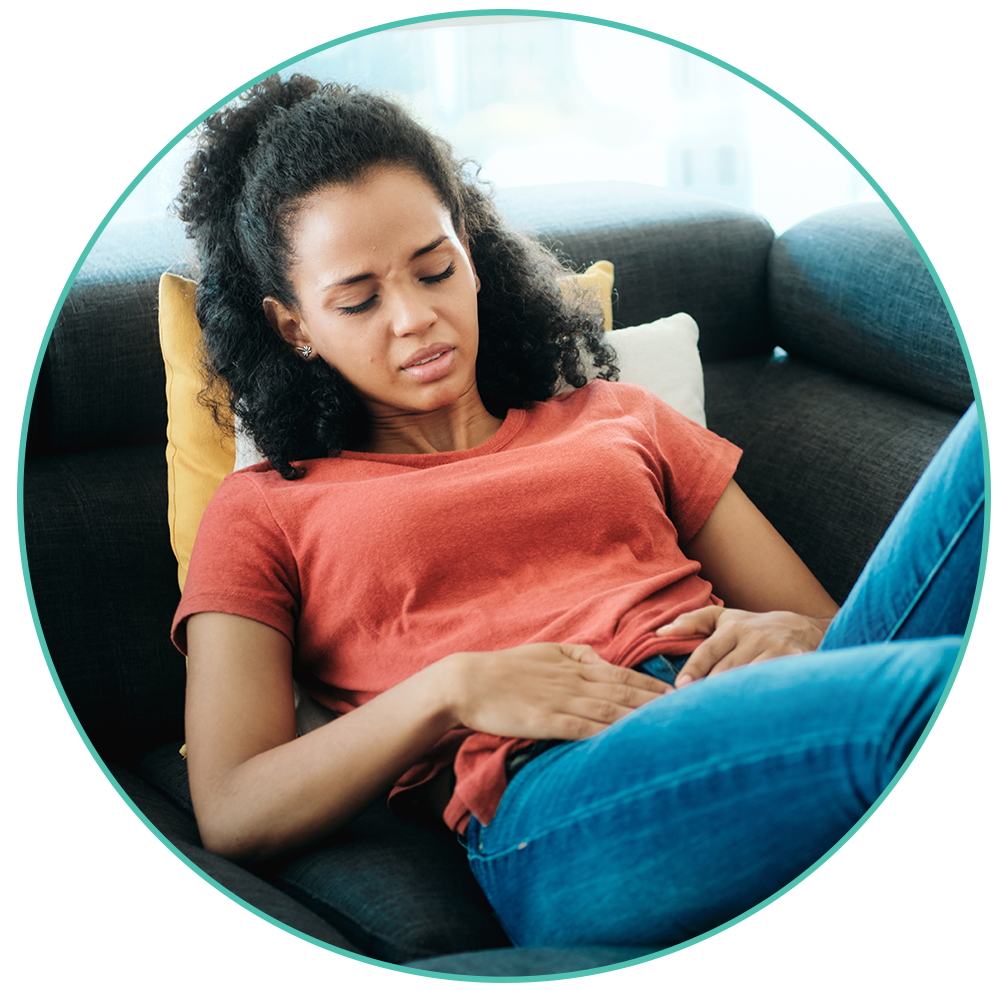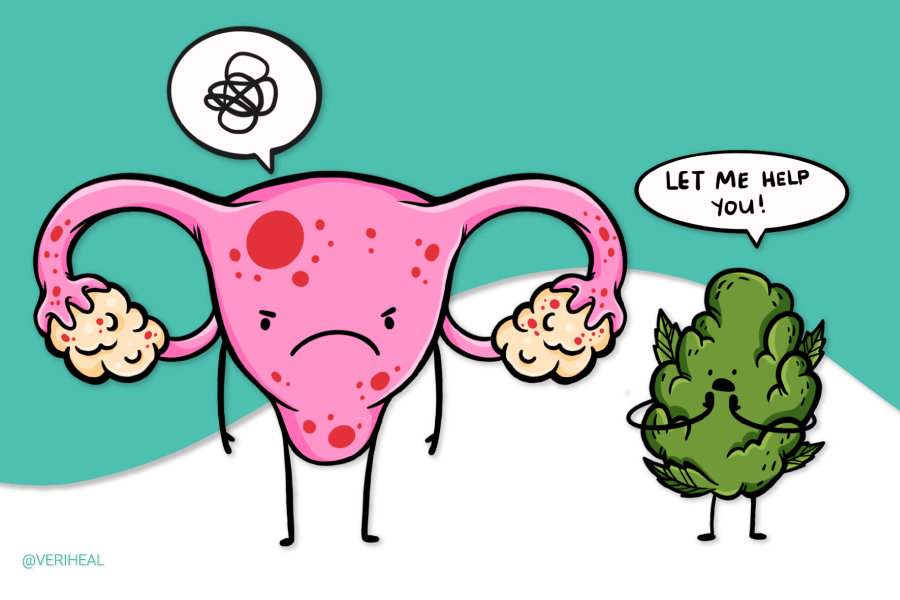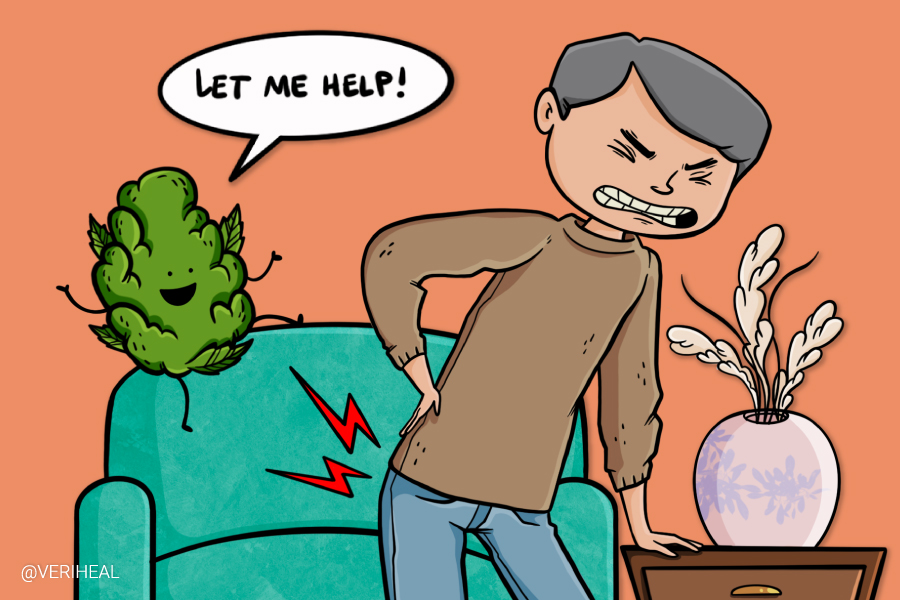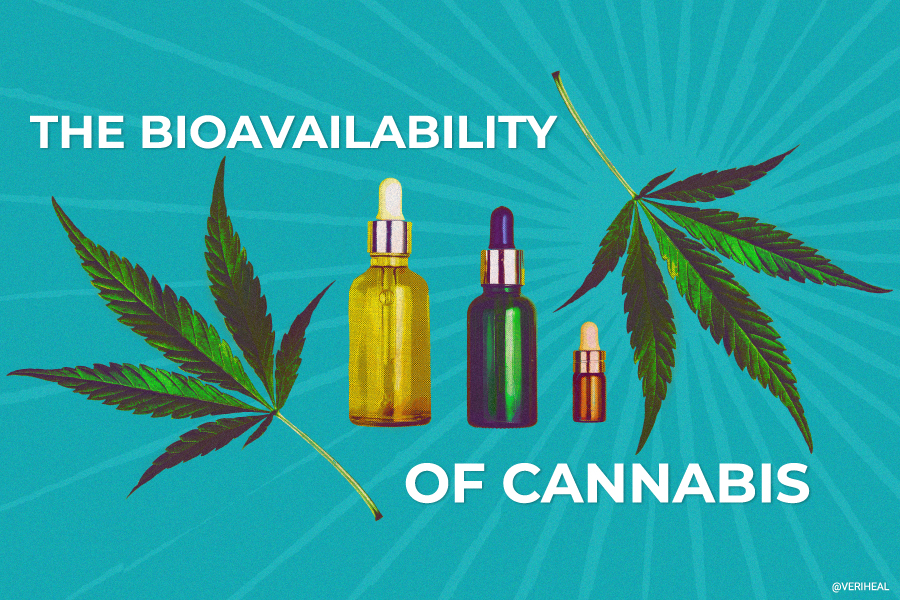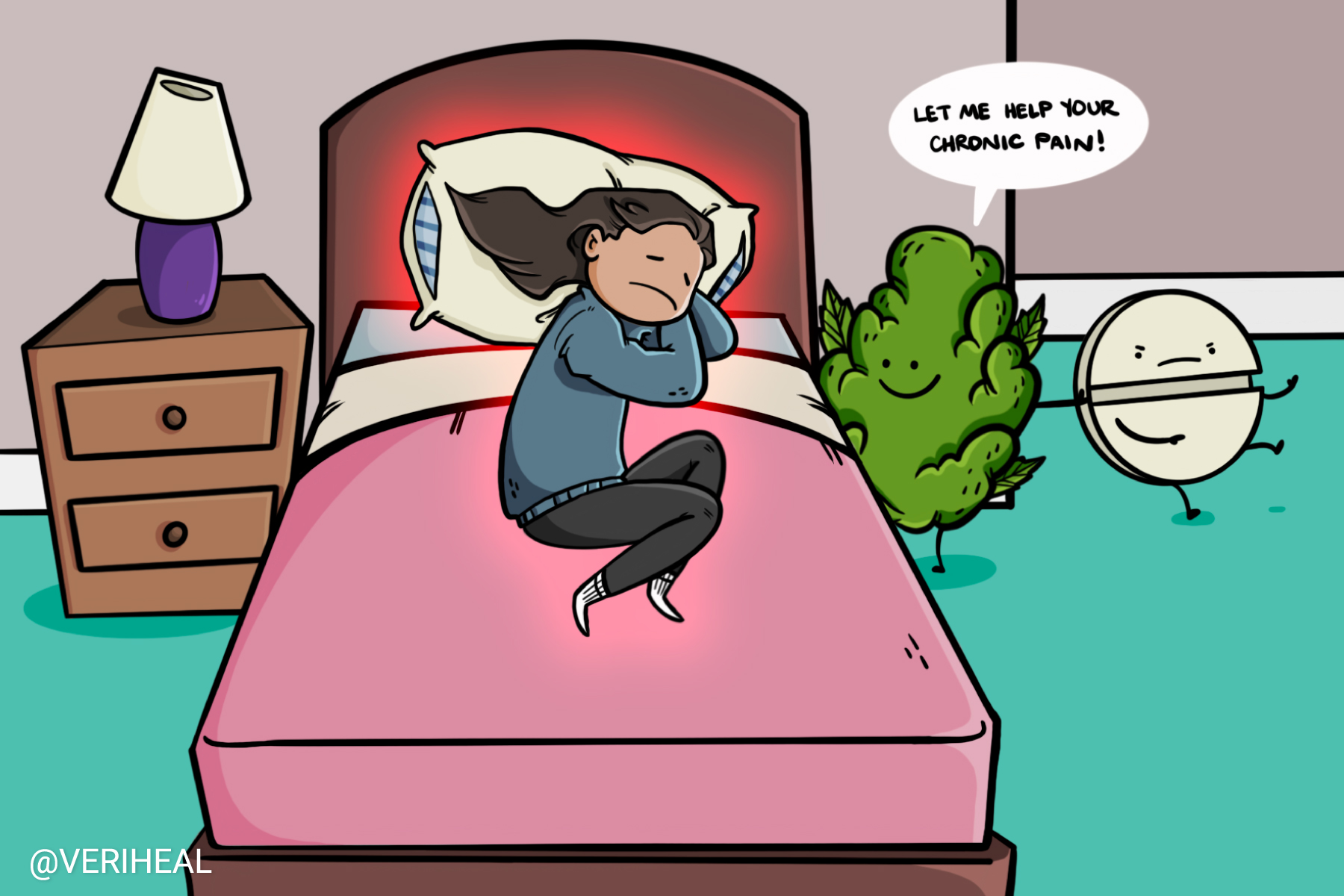The Use of Cannabis for Endometriosis Symptoms
- What is Endometriosis?
- Endometriosis Facts and Figures
- Endometriosis Treatments: A Review of the Current Research
- Endometriosis and Medical Cannabis: Recent Studies
- Important Things to Know About Endometriosis and Cannabis
- Talk to Your Doctor About Endometriosis Treatments
Some 190 million women across the planet suffer from endometriosis – a painful condition that can cause fertility problems. Although it does cause discomfort in women—particularly so during their menstrual period—endometriosis is not a fatal disease (9).
Nonetheless, endometriosis can severely impact quality of life. The good news is that a wide array of effective treatments are available, one of which could be cannabis.
As a plant that harbors an abundance of potent compounds, it’s not surprising that a growing number of women are turning to medicinal cannabis for relief from endometriosis symptoms.
What is Endometriosis?
This medical disorder occurs when the endometrial tissue lining the inside of the uterus, called the ‘endometrium’, grows outside of the uterus. Endometrial tissue overgrowths may be found on the fallopian tubes, ovaries, and intestines. In rare cases, endometrial-like tissue may accumulate (beyond) the pelvic organs (23).
Just like normal uterus-lined tissues, the endometrial-like tissue found in endometriosis patients becomes thick, before breaking down and bleeding with every passing menstrual period. These misplaced tissues are still responsive to hormonal fluctuations, which is what causes ongoing menstrual-like symptoms elsewhere. The main difference is that endometriosis prevents the blood from escaping the body and therefore it gets stuck.
Patients who are diagnosed with ovarian endometriosis may commonly notice the formation of cysts called ‘endometriomas’. As a direct effect of the cysts invading the ovaries, surrounding tissue can get irritated. Consequently, bands of scar tissue (‘adhesions’) develop, which often results in organs and pelvic tissues sticking together.
Endometriomas are serious and can cause complications such as with ovulation, interfere with fertility and infertility treatments, pain, increase the risk of ovarian cancer, and may need surgery (25). Endometriosis and complications caused by endometriomas should be promptly evaluated and monitored by your doctor or OB/GYN specialist (7).
Endometriosis Facts and Figures
The exact cause or causes of endometriosis are still unknown, with researchers and clinicians looking into different theories which are likely all to be contributory. The leading theory at this point is “retrograde menstruation”, a problem with the direction of menstrual flow that causes shed tissue to spread and implant outside the uterus. It is also thought that cells outside the uterus simply transform into the wrong cell type. Pelvic surgery like C-sections may also cause displacement of uterine cells that cause endometriosis. There is also evidence that clinical endocannabinoid deficiency may also be causing or furthering endometriosis (14).
Some scientists suggest that excessive tissue growth outside of the uterus may occur as a result of increased hormone levels. Estrogen is known to worsen these growths and symptoms, but may not necessarily cause the misplacement of the cells by itself. Endometriosis growths may also worsen if a woman’s body is producing higher than normal levels of cytokines, estrogen, and prostaglandins. Genetics and immunity may also play a role, tending to run in families. Immune cells can be faulty and not recognize these abnormal growths in order to destroy them (14).
According to the World Health Organization (WHO), approximately 10% of females across the globe are diagnosed with endometriosis worldwide (23). In the U.S. alone, the Office on Women’s Health estimates that 11% of women (more than 6.5 million) begrudgingly deal with endometriosis (18).
There could be much more than this, however, since many endometriosis symptoms overlap with other types of medical conditions. In fact, it is not unheard of for doctors to miss the diagnosis for 5-10 years (16).
Infertility is believed to affect somewhere in the range of 30%- 50% percent of women with an endometriosis diagnosis, most of whom tend to be aged between 15 and 49 (10, 15).
Endometriosis Treatments: A Review of the Current Research
While there is no known “cure” as such for endometriosis, there are certain types of medication that can help in reducing or completely stopping symptoms such as hormonal therapy including hormonal IUDs and birth control, OTC pain relievers, opioids, heat therapy, complementary and alternative medicine (CAM), and surgery as a last resort (25). Many endometriosis patients also report nausea, diarrhea, excessive bloating, constipation, pain when urinating/having sex, and spotting/bleeding between menstrual cycles.
A study from 2019 revealed that macrophages—a type of white blood cell that engulfs and obliterates foreign substances—release pro-inflammatory substances that have a direct effect on sensitizing endometriosis-related pain. The findings were published in the Journal of Federal American Societies for Experimental Biology (The FASEB Journal) (12).
Since women with endometriosis tend to have low progesterone levels, medical experts also recommend using progesterone to oppose the effects of estrogen. Endometriosis patients generally have abnormally high levels of a type of estrogen called ‘estradiol’, which essentially kicks the disease into high gear (4).
Another type of therapy that is gaining popularity among endometriosis patients is pelvic floor therapy. Based on the findings of a small 2021 study, regular pelvic floor physical therapy helped diminish endometriosis symptoms (8). However, a 2021 systematic review of more exercise studies showed that the effects of physical activity like flexibility and strength training, cardiovascular fitness, and yoga on endometriosis symptoms are still unclear (22).
In cases where the symptoms of endometriosis reach their most severe, doctors will normally advise the patient to undergo laparoscopic surgery. Unfortunately, some patients may have to undergo repeat surgery as well as go back on hormonal therapy if they are not trying to get pregnant.
The Endocannabinoid System and Endometriosis
There are currently no randomized clinical trials directly examining cannabinoids and endometriosis. However, there is a fair amount of self-reported and preclinical data, along with a plausible underlying scientific basis for the potential role of cannabinoids in endometriosis (5).
Recent studies point to a possible dysfunction of the endocannabinoid system (ECS) that is known to regulate reproductive functions. There is a mismatch of CB receptors and endocannabinoids that appears to lead to more endometriosis tissue growth, inflammation, and pain (17).
Women with endometriosis were found to have lower levels of CB1 receptors in endometrial tissue, along with higher levels of TRPV1 receptors and endocannabinoids trying to compensate for the low number of CB1 receptors. These findings are suggested to be the cause of more endometriosis growth and more severe pain ratings. It is possible that addressing this underlying clinical endocannabinoid deficiency (CED) with cannabinoids like THC and CBD may be helpful for certain endometriosis symptoms.
Endometriosis and Medical Cannabis: Recent Studies
Based on the findings of a study published by the Public Library of Science, medicinal cannabis was subjectively able to reduce pelvic pain, treat gastrointestinal problems and positively influence mood. The study analyzed data from self-assessments of 252 participants, all of whom claimed to have endometriosis. Using the StrainprintTM app, they logged 16193 cannabis sessions stretching from April 2017 to February 2020 (21).
Similarly, a 2021 survey of 213 New Zealand women with endometriosis and/or PCOS found promising results for symptomatic relief and even opioid substitution from using cannabis. According to the results, “The most common outcomes that cannabis was used for were to improve pain relief (95.5%) and to improve sleep (95.5%). Respondents reported that their symptom was “much better” for pain (81%), sleep (79%), and nausea or vomiting (61%). Over three-quarters (81.4%) indicated cannabis had reduced their normal medication usage. Over half (59%) were able to completely stop a medication, most commonly (66%) analgesics. Opioids (40%) were the most common class of analgesic stopped (3).”
The pain-relieving and anti-inflammatory qualities of cannabidiol (CBD) make this non-psychotropic cannabinoid stand out for endometriosis patients. There’s also CBD’s psychotropic counterpart, delta-9 tetrahydrocannabinol (THC) which, in a separate preclinical study, was shown to help reduce endometriosis-associated pain.
Titled, “Disease-modifying effects of natural Δ9-tetrahydrocannabinol in endometriosis-associated pain,” the study analyzed the effects of THC after recurring exposure to the mind-altering cannabinoid in a rodent model of surgically-induced endometriosis (11).
Researchers gleaned a fascinating key takeaway from the study—daily use of cannabis dosed at 2mg THC per kilogram of body weight resulted in reduced mechanical hypersensitivity, pain, and discomfort, as well as improved cognitive function without modifying the anxiogenic phenotype.
Even more impressive was the fact that THC successfully curbed the development of endometrial cysts.
The COVID-19 pandemic has also caused an increased interest in cannabis for managing endometriosis symptoms according to a new international 2022 study (2). Many women who had never tried cannabis before reported starting their consumption during this time because of the restricted healthcare appointment access, increased stress and anxiety, and delayed surgery. Also, most women who had already tried cannabis also opted to use more at the same time. The legality and cost of cannabis in their area also had significant effects on the results, including accessing it and being more open with their provider about it.
What Cannabis Preparations are Best for Endometriosis?
A study, titled, “Effects of cannabis ingestion on endometriosis-associated pelvic pain and related symptoms,” found that inhalation is the most popular method of consumption among patients with endometriosis (21).
Specifically, of 16,193 sessions, 10,914 of these times, or 67.4%, were chosen as inhaled cannabis. Vaporizing was a preferred method of consumption among 40.6% (6575 times), whereas 25.9% of the time it was smoked (4191 sessions) smoked. Only 0.84% of sessions (132 times) were done using concentrated forms of cannabis, and 0.10% of the time (16 sessions) people used a dab bubbler/rig.
Conversely, orally ingested cannabis products were used in 25% of sessions (4041 sessions). Of those times, there were 558 ingestions of pills, 389 ingestions of edibles, 90 times sprays were used, 90 tincture doses, and 52 times were using oral products. Topical products provided localized pain relief in 33 instances, while 20 times chose transdermal cannabis products for their session.
lmportant Things to Know About Endometriosis and Cannabis
To ensure you achieve the maximum level of symptomatic relief after consuming medical marijuana for endometriosis, keep the following things in mind.
Chemovar Choice
Cannabis chemovers, formerly known as “strains” are essentially the ancestors of certain plants in the cannabis sativa L family. The cannabis plant’s genetics have been tweaked by breeders around the world and experts used to believe that there were somewhere in the realm of 700-800 unique strains (13). However, new evidence shows that terpene profiles are more important unique identifiers of “strains” that are now called “chemovars” according to research scientists (19).
The effects of cannabis vary widely between chemovars because of their terpene profiles, but you can get a broader understanding of the effects if you research a little about its lineage. Remember that terpene profile is more important than “strain” name, and is a more accurate reflection of the true biodiversity of cannabis plants out there. A 2020 study in Nevada showed that among 2,662 flower samples of 396 breeder-reported “strains”, there were only three distinguishable chemovars present based on their terpene fingerprints (19).
Smart Dosing
When introducing medicinal cannabis into your lifestyle, you really ought to spend some time experimenting with dosage. Microdosing is recommended for beginner consumers, regardless of whether you opt for a CBD- or THC-dominant strain.
Begin with 2.5 mg of cannabinoids and slowly build your way up until you find your “sweet spot”. Even if you are desperate to relieve chronic pain caused by endometriosis, you should refrain from overdoing it. This is because everyone has a unique endocannabinoid system (ECS), meaning that your therapeutic range could be completely different to the next person’s. Taking too much to start with increases your risks of unpleasant side effects like anxiety and fast heart rate, while also necessarily increasing your tolerance level. A high tolerance will require more amounts of cannabis for the same effects you could get at a lower dose. A cannabis coach at Veriheal can also help you figure out a good wellness plan and dosing strategy to minimize these risks and maximize your cannabis journey.
Synergistic Reactions
Before trying cannabis for endometriosis, familiarize yourself with a phenomenon coined “the entourage effect (20).” This is a term used to describe the synergy between cannabinoids and terpenes when they stimulate receptors in the endocannabinoid system (ECS). As a result, the effects of cannabis can be bolstered by several magnitudes. If you are someone with a low tolerance to cannabis, the entourage effect can maximize taking a lower dosage, which is why you ought to pay extra thought to the composition of your medical cannabis and opt for whole-plant or full-spectrum products over isolates. On the other hand, mixing different chemovars with varying terpene profiles could help you to target multiple symptoms at once. Check out Veriheal’s various pages on terpenes or speak with a cannabis coach to see what terpenes you should consider in your medical cannabis regimen. Since many foods contain terpenes, you should pair your food wisely with cannabis, too.
Talk to Your Doctor About Endometriosis Treatments
Patients must first organize a meeting with an authorized healthcare provider—usually, the state board posts a registry of doctors, PAs, ARNPs, and other healthcare personnel who can legally prescribe cannabis on its website—to talk about their health status and assess their medical history.
A face-to-face medical examination used to be required before the pandemic, but that requirement has largely been waived by now. This means it is now easier than ever to get your medical cannabis card online.
Some other considerations to think about before trying medical cannabis for endometriosis include:
- Talking with a doctor about what other treatment options you have tried
- Discussing your current medication use and whether you desire to become pregnant
- If your job falls into an industry whereby the employees must abide by specific cannabis use standards
- Whether or not your employer randomly carries out drug testing and/or forbids cannabis use in the workplace.
Complementary Treatments Worth Discussing with Your Doctor
Your doctor might suggest that you start taking a prescribable over-the-counter pain reliever to ease severe endometriosis pain.
Examples of the most commonly prescribed medications to relieve endometriosis-related menstrual cramps include nonsteroidal anti-inflammatory drugs (NSAIDs) ibuprofen (Advil, Motrin IB, others) or naproxen sodium (Aleve). Rarely, opioids are prescribed for severe pain but this is now being routinely phased out.
Supplemental hormones have also demonstrated promise in providing endometriosis patients with chronic pain relief.
Complementary and Alternative Medicine (CAM) for endometriosis is newly popular and includes herbal remedies, acupuncture, Chinese medicine, behavior modification and lifestyle changes, biofeedback, homeopathy, vitamins, and physical therapy (6). Many women are interested in CAM over hormonal therapies, but do not know how to get started, so be sure to ask your provider for support or a referral (1).
Why not take the first step towards relieving endometriosis chronic pain with medical cannabis? Veriheal streamlines the process of consulting with a doctor to obtain a recommendation. A personalized consult with a cannabis coach can help you figure out what methods and terpenes are right for you.
Our network strictly features doctors who are licensed to serve medical cannabis in their respective states. We’ll also provide you with access to the best dispensaries.
Contact us today to find out if you qualify.
Note: The content on this page is for informational purposes only and is not intended to be professional medical advice. Do not attempt to self-diagnose or prescribe treatment based on the information provided. Always consult a physician before making any decision on the treatment of a medical condition.
1. Adamietz, A., Boosz, A., Mueller, A., Hornung, D., Trunk, K., Beckmann, M. W., Dittrich, R., & Hack, C. C. (2021). Complementary and alternative medicine (CAM) in women with endometriosis. European Journal of Obstetrics & Gynecology and Reproductive Biology, 262, 7–12. https://www.sciencedirect.com/science/article/abs/pii/S0301211521002165
2. Armour, M., Sinclair, J., Cheng, J., Davis, P., Hameed, A., Meegahapola, H., Rajashekar, K., Suresh, S., Proudfoot, A., & Leonardi, M. (2022). Endometriosis and cannabis consumption during the COVID-19 pandemic: An International Cross-sectional survey. Cannabis and Cannabinoid Research. https://www.liebertpub.com/doi/10.1089/can.2021.0162
3. Adamietz, A., Boosz, A., Mueller, A., Hornung, D., Trunk, K., Beckmann, M. W., Dittrich, R., & Hack, C. C. (2021). Complementary and alternative medicine (CAM) in women with endometriosis. European Journal of Obstetrics & Gynecology and Reproductive Biology, 262, 7–12. https://www.ejog.org/article/S0301-2115(21)00216-5/fulltext
4. Armour, M., Sinclair, J., Noller, G., Girling, J., Larcombe, M., Al-Dabbas, M. A., Hollow, E., Bush, D., & Johnson, N. (2021). Illicit cannabis usage as a management strategy in New Zealand women with endometriosis: An online survey. Journal of Women’s Health, 30(10), 1485–1492. https://www.liebertpub.com/doi/abs/10.1089/jwh.2020.8668
5. Bernstein, S. (2020). Estrogen levels and endometriosis risk. WebMD. Retrieved July 20, 2022, from https://www.webmd.com/women/endometriosis/estrogen-endometriosis
6. Bouaziz, J., Bar On, A., Seidman, D. S., & Soriano, D. (2017). The clinical significance of endocannabinoids in endometriosis pain management. Cannabis and Cannabinoid Research, 2(1), 72–80. https://www.liebertpub.com/doi/full/10.1089/can.2016.0035
7. Complementary and alternative therapies for endometriosis. Endometriosis Therapies – Brigham and Women’s Hospital. (n.d.). Retrieved July 20, 2022, from https://www.brighamandwomens.org/obgyn/infertility-reproductive-surgery/endometriosis/complimentary-and-alternative-therapies-for-endometriosis
8. Deep ovarian endometriosis (endometriomas). Endometriomas – Deep Ovarian Endometriosis – Brigham and Women’s Hospital. (n.d.). Retrieved July 20, 2022, from https://www.brighamandwomens.org/obgyn/infertility-reproductive-surgery/endometriosis/deep-ovarian-endometriosis
9. Del Forno, S., Arena, A., Pellizzone, V., Lenzi, J., Raimondo, D., Cocchi, L., Paradisi, R., Youssef, A., Casadio, P., & Seracchioli, R. (2021). Assessment of Levator Hiatal area using 3d / 4d transperineal ultrasound in women with deep infiltrating endometriosis and superficial dyspareunia treated with pelvic floor muscle physiotherapy: Randomized Controlled Trial. Ultrasound in Obstetrics & Gynecology, 57(5), 726–732. https://obgyn.onlinelibrary.wiley.com/doi/full/10.1002/uog.23590
10. Ellis, K., Munro, D., & Clarke, J. (2022). Endometriosis is undervalued: A call to action. Frontiers in Global Women’s Health, 3. https://www.frontiersin.org/articles/10.3389/fgwh.2022.902371/full
11. Endometriosis.org. (2021). Facts about endometriosis. Endometriosis.org. Retrieved July 20, 2022, from https://endometriosis.org/resources/articles/facts-about-endometriosis/
12. Escudero-Lara, A., Argerich, J., Cabañero, D., & Maldonado, R. (2020). Disease-modifying effects of natural Δ9-tetrahydrocannabinol in endometriosis-associated pain. ELife, 9. https://www.researchgate.net/publication/338573381_Disease-modifying_effects_of_natural_D9-tetrahydrocannabinol_in_endometriosis-associated_pain
13. Forster, R., Sarginson, A., Velichkova, A., Hogg, C., Dorning, A., Horne, A. W., Saunders, P. T., & Greaves, E. (2019). Macrophage‐derived insulin‐like growth factor‐1 is a key neurotrophic and nerve‐sensitizing factor in pain associated with endometriosis. The FASEB Journal, 33(10), 11210–11222. https://www.ncbi.nlm.nih.gov/pmc/articles/PMC6766660/
14. Gloss, D. (2015). An overview of products and bias in Research. Neurotherapeutics, 12(4), 731–734. https://www.ncbi.nlm.nih.gov/pmc/articles/PMC4604179/
15. Hoyle AT, Puckett Y. Endometrioma. [Updated 2022 Jan 2]. In: StatPearls [Internet]. Treasure Island (FL): StatPearls Publishing; 2022 Jan-. Available from: https://www.ncbi.nlm.nih.gov/books/NBK559230/
16. Macer, M. L., & Taylor, H. S. (2012). Endometriosis and infertility. Obstetrics and Gynecology Clinics of North America, 39(4), 535–549. https://www.ncbi.nlm.nih.gov/pmc/articles/PMC3538128/
17. Mehedintu, C., Plotogea, M. N., Ionescu, S., & Antonovici, M. (2014). Endometriosis still a challenge. Journal of medicine and life, 7(3), 349–357. https://www.ncbi.nlm.nih.gov/pmc/articles/PMC4233437/
18. Nahler, G. (2020). Endometriosis – an indication for cannabinoids ? Traditional Medicine, 1(1). https://www.traditionalmedicines.org/full-text/endometriosis-an-indication-for-cannabinoids
19. Office on Women’s Health, U.S. Department of Health and Human Services. (2021). Endometriosis. Endometriosis | Office on Women’s Health. Retrieved July 20, 2022, from https://www.womenshealth.gov/a-z-topics/endometriosis
20. Reimann-Philipp, U., Speck, M., Orser, C., Johnson, S., Hilyard, A., Turner, H., Stokes, A. J., & Small-Howard, A. L. (2020). Cannabis chemovar nomenclature misrepresents chemical and genetic diversity; survey of variations in chemical profiles and genetic markers in Nevada medical cannabis samples. Cannabis and Cannabinoid Research, 5(3), 215–230. https://www.liebertpub.com/doi/10.1089/can.2018.0063
21. Russo, E. B. (2019). The case for the entourage effect and conventional breeding of clinical cannabis: No “strain,” no gain. Frontiers in Plant Science, 9. https://www.ncbi.nlm.nih.gov/pmc/articles/PMC6334252/?report=classic
22. Sinclair, J., Collett, L., Abbott, J., Pate, D. W., Sarris, J., & Armour, M. (2021). Effects of cannabis ingestion on endometriosis-associated pelvic pain and related symptoms. PLOS ONE, 16(10). https://pubmed.ncbi.nlm.nih.gov/34699540/
23. Tennfjord, M. K., Gabrielsen, R., & Tellum, T. (2021). Effect of physical activity and exercise on endometriosis-associated symptoms: A systematic review. BMC Women’s Health, 21(1). https://www.ncbi.nlm.nih.gov/pmc/articles/PMC8502311/
24. WHO. (2021, March 31). Endometriosis. World Health Organization. Retrieved July 20, 2022, from https://www.who.int/news-room/fact-sheets/detail/endometriosis
25. ZANELOTTI, A. U. S. T. I. N., & DECHERNEY, A. L. A. N. H. (2017). Surgery and endometriosis. Clinical Obstetrics & Gynecology, 60(3), 477–484. https://www.ncbi.nlm.nih.gov/pmc/articles/PMC5635831/




